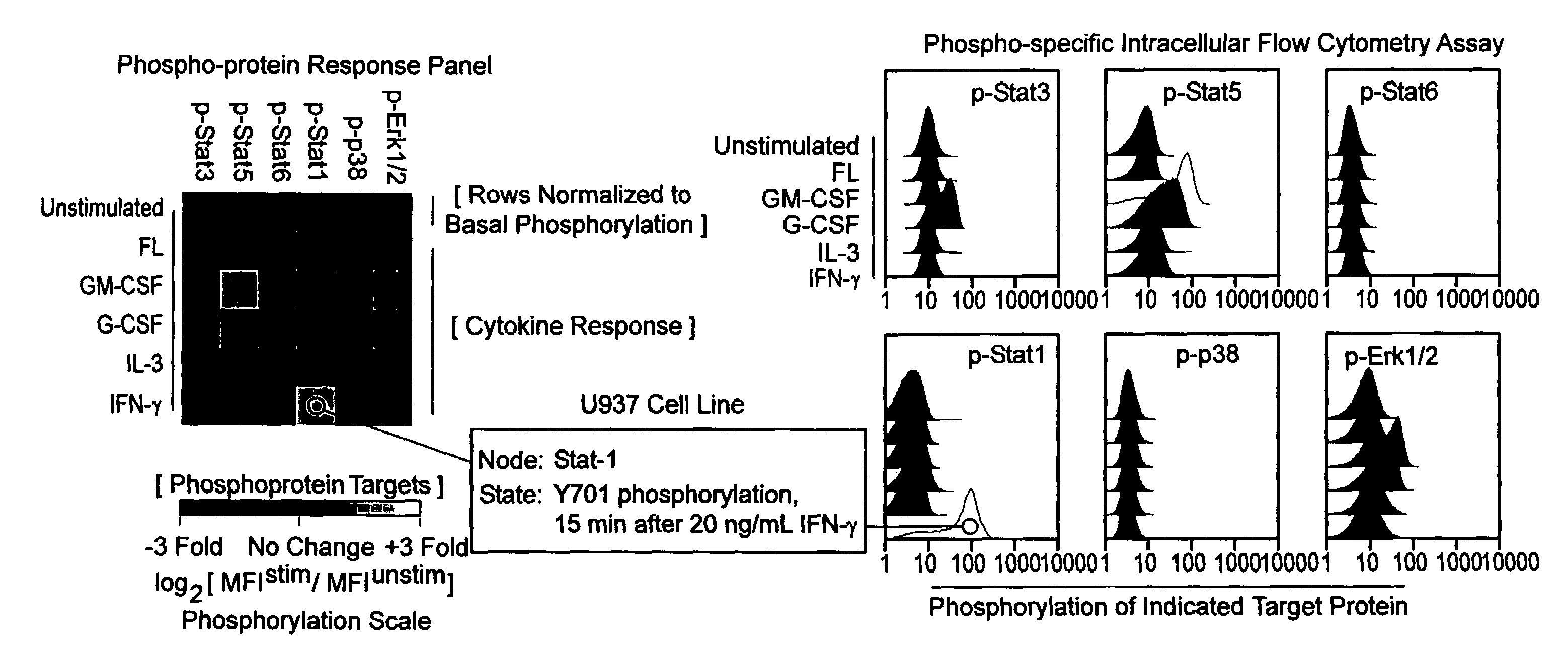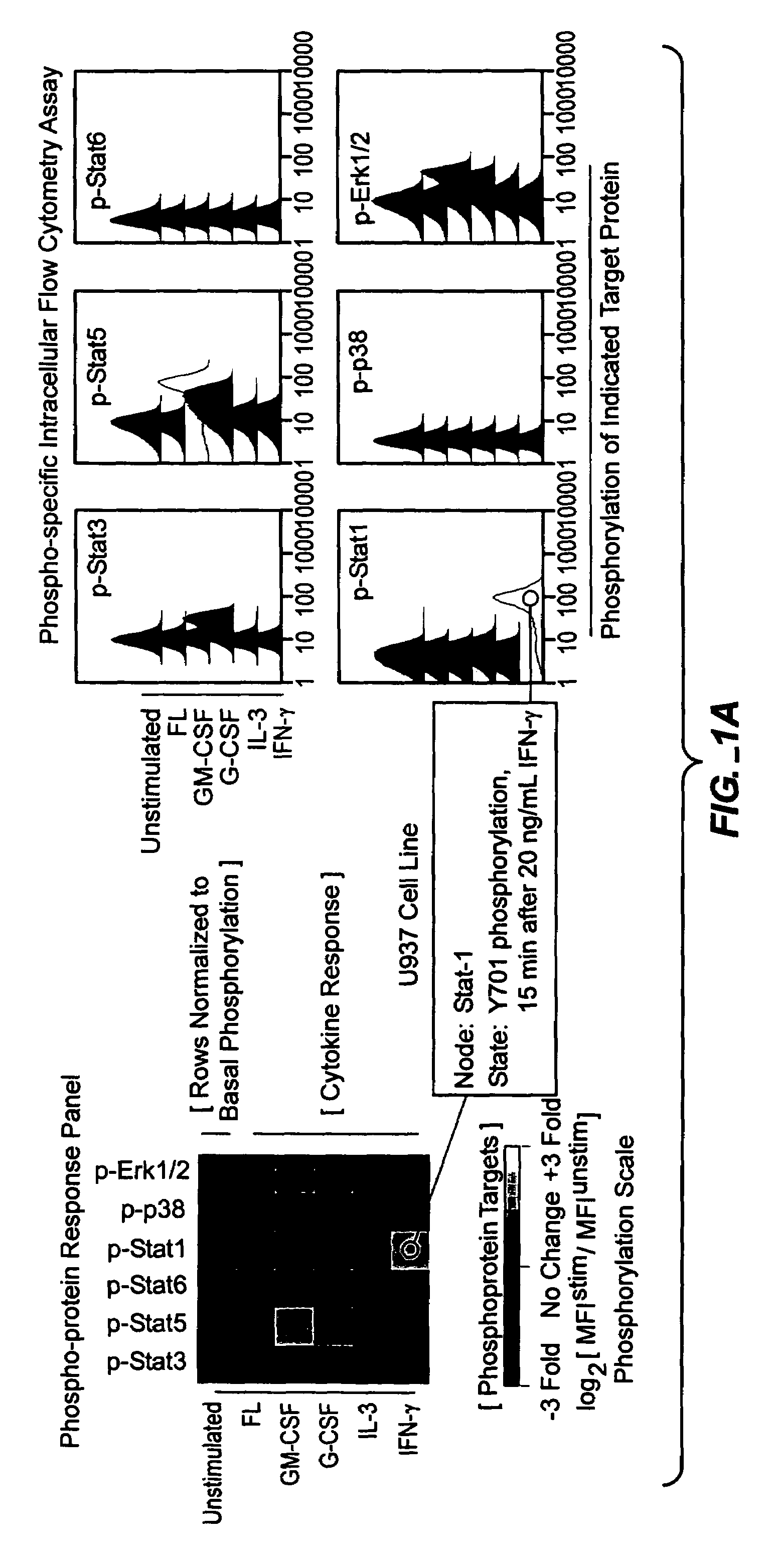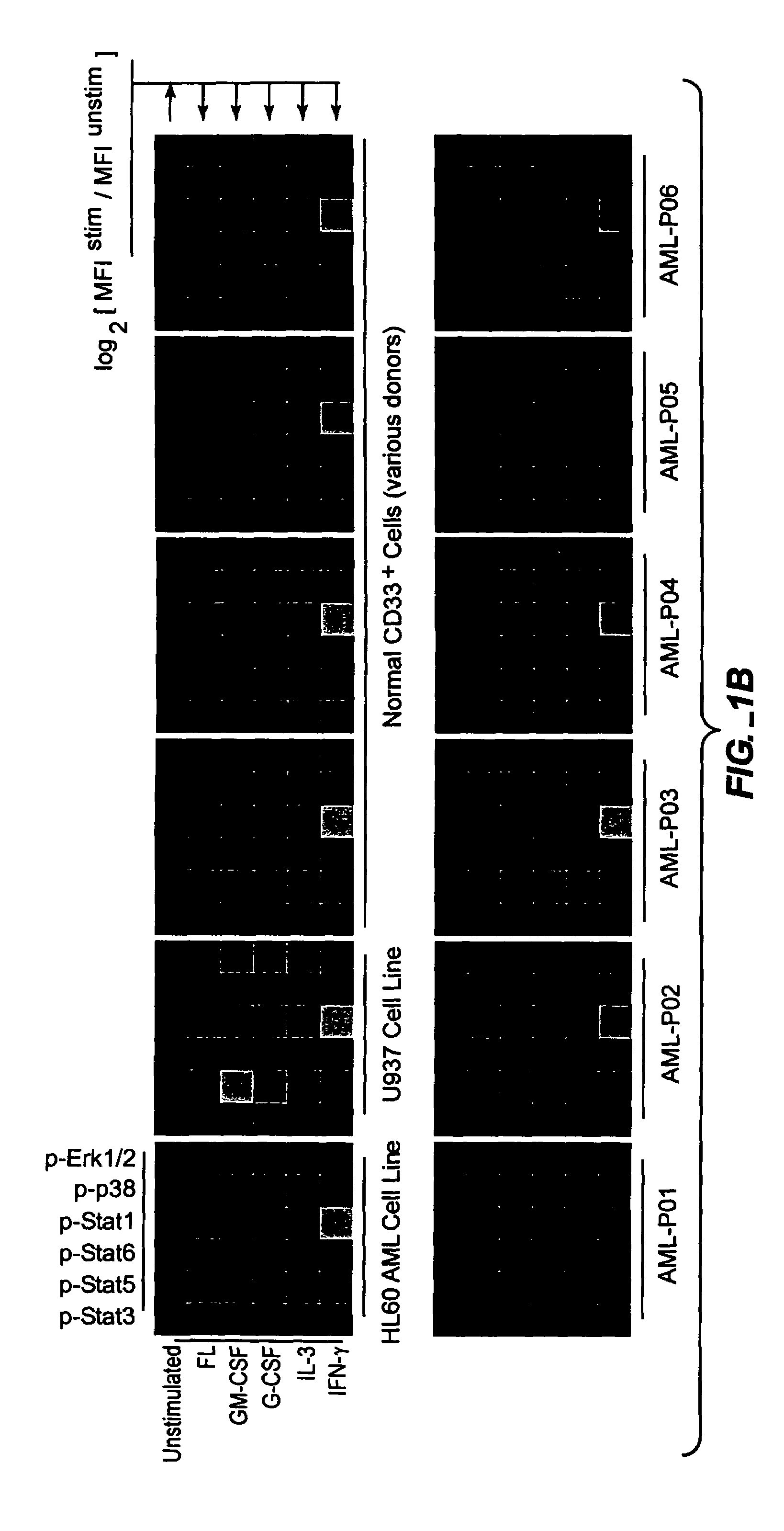Methods and compositions for risk stratification
a risk stratification and composition technology, applied in chemical methods analysis, biomass after-treatment, instruments, etc., can solve the problems of obscuring key information, lysates can only approximate the native cellular activation profiles of signal cascades, and methods have a number of inherent limitations
- Summary
- Abstract
- Description
- Claims
- Application Information
AI Technical Summary
Benefits of technology
Problems solved by technology
Method used
Image
Examples
example 1
[0306]In this Example, using the methods and compositions of the present invention, the present inventors (also referred to herein as “we”) show that Leukocyte Function Antigen-1 (LFA-1) is essential in the formation of immune cell synapses and has a role in the pathophysiology of various autoimmune diseases. In this Example, using the methods and compositions of the present invention, the present inventors demonstrate that ICAM-2 induced an LFA-1 signal transduction pathway that is linked to receptor clustering and activation by both the microtubule and actin cytoskeleton. ICAM-2 exhibited a 21.7 pM / cell binding affinity as determined by single cell analysis. ICAM-2 / LFA-1 engagement induced activation of PKC and a reorganization of both the actin and microtubule cytoskeleton. These events resulted in a Syk dependent activation of the p44 / 42 MAPK pathway upon cytotoxic T cell effector-target cell binding via active LFA-1. ICAM-2 mediated human CD56+CD8+ perforin release and resultan...
example 2
[0342]Phospho-protein driven signaling networks support altered growth factor responses of tumors and are considered crucial to initiation and maintenance of tumor cell pathology. In acute myeloid leukemia (AML), dysregulated growth and inhibition of apoptosis lead to the accumulation of immature myeloid progenitor cells and oncogenic progression. We show here that surveying phospho-protein responses to cytokine stimulation, in addition to widely studied basal phosphorylation states, reveals dysregulated signaling nodes and enables identification of a signaling pathology profile. We further show that unsupervised clustering of phospho-protein profiles can be used to identify AML patient groups that correlate with prognostic indicators, such as mutation of the receptor tyrosine kinase Flt3 and chemotherapy resistance. In patients with Flt3 mutations, the biochemical differences used to define patient groups indicated a potentiated response of Stat3 and Stat5 to the myeloid cytokines ...
example 3
[0362]The following example employs the methods and compositions of the instant invention to generate and analyze potentiation data based on exposure to a specific drug.
[0363]Initial patient samples, including five collections from each of twelve patients (total 60 samples), are aliquoted into 96-well plates to accommodate the cytokine responses panel shown in Table 1. Each 96 well plate then be stained with either the 4-color or 6-color antibody cocktails detailed in Table 2.
[0364]In addition to the patient samples, 3 cell lines (U937, HL60, MV41 1) are employed for in vitro drug investigation. The cell lines are individually treated with drug at 5 time points (1 hr, 2, hr, 4 hr, 12 hr, 24 hr) prior to cytokine stimulation. The resulting 15 samples are aliquoted into 96-well plates and stained as described above.
[0365]Finally, collections from six normal blood donors are processed as “control” samples. These control samples include five collections from each of the six donors and a...
PUM
| Property | Measurement | Unit |
|---|---|---|
| temperature | aaaaa | aaaaa |
| pH | aaaaa | aaaaa |
| pH | aaaaa | aaaaa |
Abstract
Description
Claims
Application Information
 Login to View More
Login to View More - R&D
- Intellectual Property
- Life Sciences
- Materials
- Tech Scout
- Unparalleled Data Quality
- Higher Quality Content
- 60% Fewer Hallucinations
Browse by: Latest US Patents, China's latest patents, Technical Efficacy Thesaurus, Application Domain, Technology Topic, Popular Technical Reports.
© 2025 PatSnap. All rights reserved.Legal|Privacy policy|Modern Slavery Act Transparency Statement|Sitemap|About US| Contact US: help@patsnap.com



